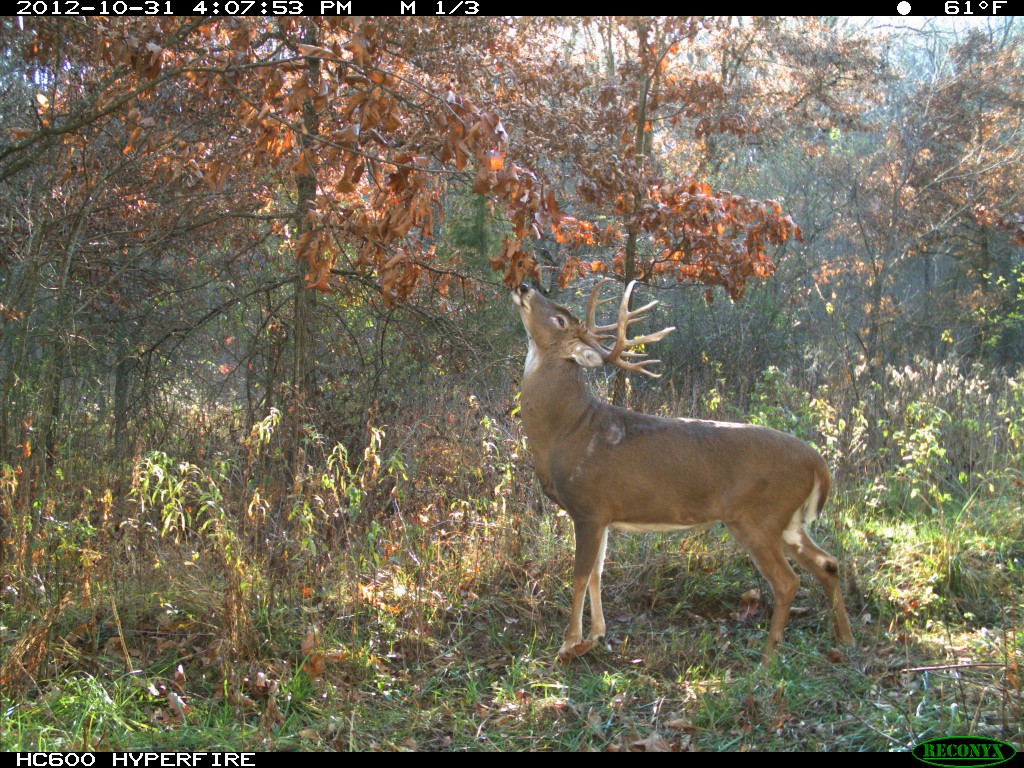Managing for Maximum Inches
Managing for Max Inches
Over the past 10 years or so, I’ve come to a pretty firm conclusion. For those of us that are trying to produce mega racks, removing mature, inferior racked bucks is very important to achieving max inches on the remaining bucks. In fact, I’d argue that it’s the 3rd most important factor, even sometimes second, in areas already providing good nutrition.
This is my theory. A property can only hold X # of dominant bucks. In an article I’m doing for Deer & Deer Hunting, I explain the system I use to increase that number, but there’s still an upper cap (I have to wait to explain that until the article comes out).
Dominant bucks is the key to focus on. Just like people, not all mature bucks feel the need to be dominant. Some are content being push overs, others refuse to settle for anything less than dominance and then there are those that fall in between. When the # of bucks that refuse to settle for less than dominance exceed X, they either literally kill each other or, more often, the loser is pushed out of that area.

At the same time, there are those caught in between the two extremes. When they lose in their fight for dominance, they often stay, simply assuming a subordinate role.
Here’s the challenge. The bucks don’t walk around with color coded ear tags for what personality type they are. At the same time, as most of you know, dominance has nothing to do with inches of antler. Through observations and scouting cameras, it’s not hard to take a pretty educated guess at where the mature bucks fall in the dominance structure/personality.
However, it’s dang hard to tell on those 3.5 year olds, until it’s too late. See, at 3.5 years of age, bucks really start displaying their personality. The problem for them is that, in populations with a good age structure, they don’t have the bodies or expertise to match up with the 4.5s+. Heck, most 4.5s aren’t yet able to match the 5.5-7.5s.
The first problem becomes those 3.5s and 4.5s that decide it’s their time and refuse to back down. They most often get killed or have to adjust their core area to avoid the dominants they can’t match up with.
No biggie when one has a hole on their property he can fill or he’s a run of the mill 8 point. However, it really stinks when he has the characteristics to be special and shifts over to the neighbors. Having lost more bucks like this than I’d care to admit, I can attest to how much that can suck.
The other problem is that increased stress doesn’t do bucks any favors. I’ve come to believe that wanting to be dominant, yet having to accept a subordinate role is stressful. First, those with even somewhat aggressive personalities must often get beat up a few times to accept that they aren’t the man. Then, they often have to try to avoid the dominant and cower around him when in his presence. Anyone that was ever bullied in school by older, bigger kids realizes that can be stressful.
I’ve come to believe that stress suppresses antler growth. I’ve seen it myself (the explosion in growth on some bucks after a dominant bully is removed), was told that by a deer manager I greatly respect and then Don Higgins said it’s accepted in the deer farming world.
Add all of this together, and I believe managing both on age and antler potential is very, very beneficial to producing the most bone. My buck management goals are as follows:
Remove every 3.5+ year old buck that doesn’t display the traits of being special (points, beam length, tine length and so on).
Wait until a buck hits 5.5 to harvest if he does display special characteristics.
Make 4.5 and older bucks that appear aggressive, yet don’t offer impressive head gear a top removal priority.
Here’s the goal, in a nutshell. I realize that if I have a good age structure, some bucks are going to be pushed to the neighbors no matter what. At the same time, I believe those doing the pushing will somewhat suppress antler growth of some of the bucks under them. Since that’s going to happen no matter what, I want to do my best to see that those dominant bucks have superior racks, as opposed to a 120″ 8.
I also want to open as many holes for the great up and comers as I can. Removing the average and below average 3.5+s helps open holes for them and again reduces stress.
I agree with QDMA that you can’t manage for genetics in wild deer. However, we start splitting a bit on managing the standing stock. I can point to many, many anecdotal examples of this playing out. No, anecdotal evidence isn’t as solid as scientific experiments, but, because of having to gauge dominance and such, I don’t see how one can truly do a scientific experiment on this, and anecdotal evidence is as good as it gets.
Also, I’m sure not suggesting this is the right approach for everyone. However, I would strongly contend that you don’t need 500+ acres to pull this off. I’d argue this approach is even more effective/important on a 100 acre property than on a 1000 acre piece.
Finally, I should be clear to point out that, having discussed this topic with Lindsay, what I describe is NOT QDMA’s position. It’s not backed up by scientific research and QDMA’s position is essentially that all bucks should be priorities once they are mature, regardless of antler characteristics.

